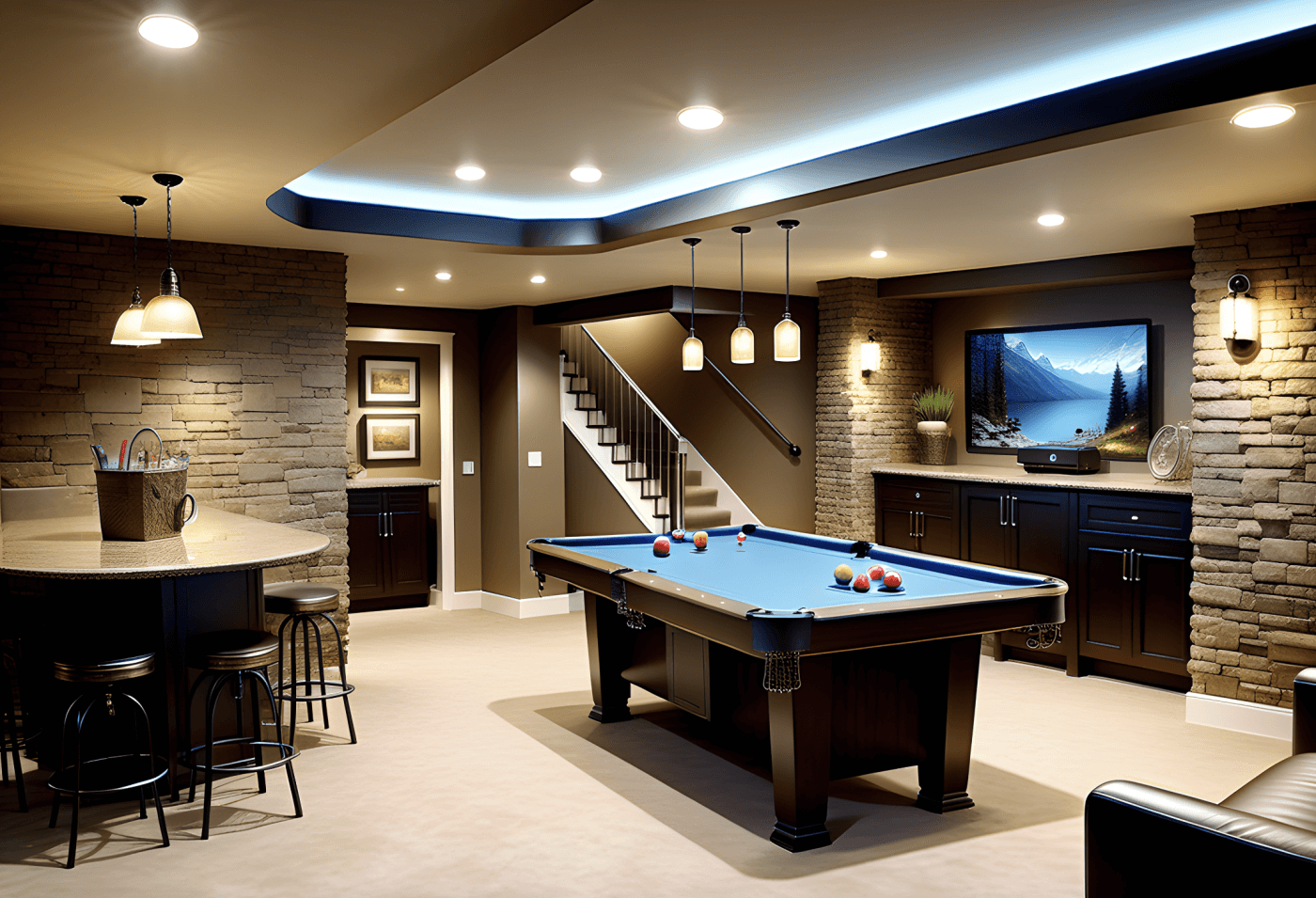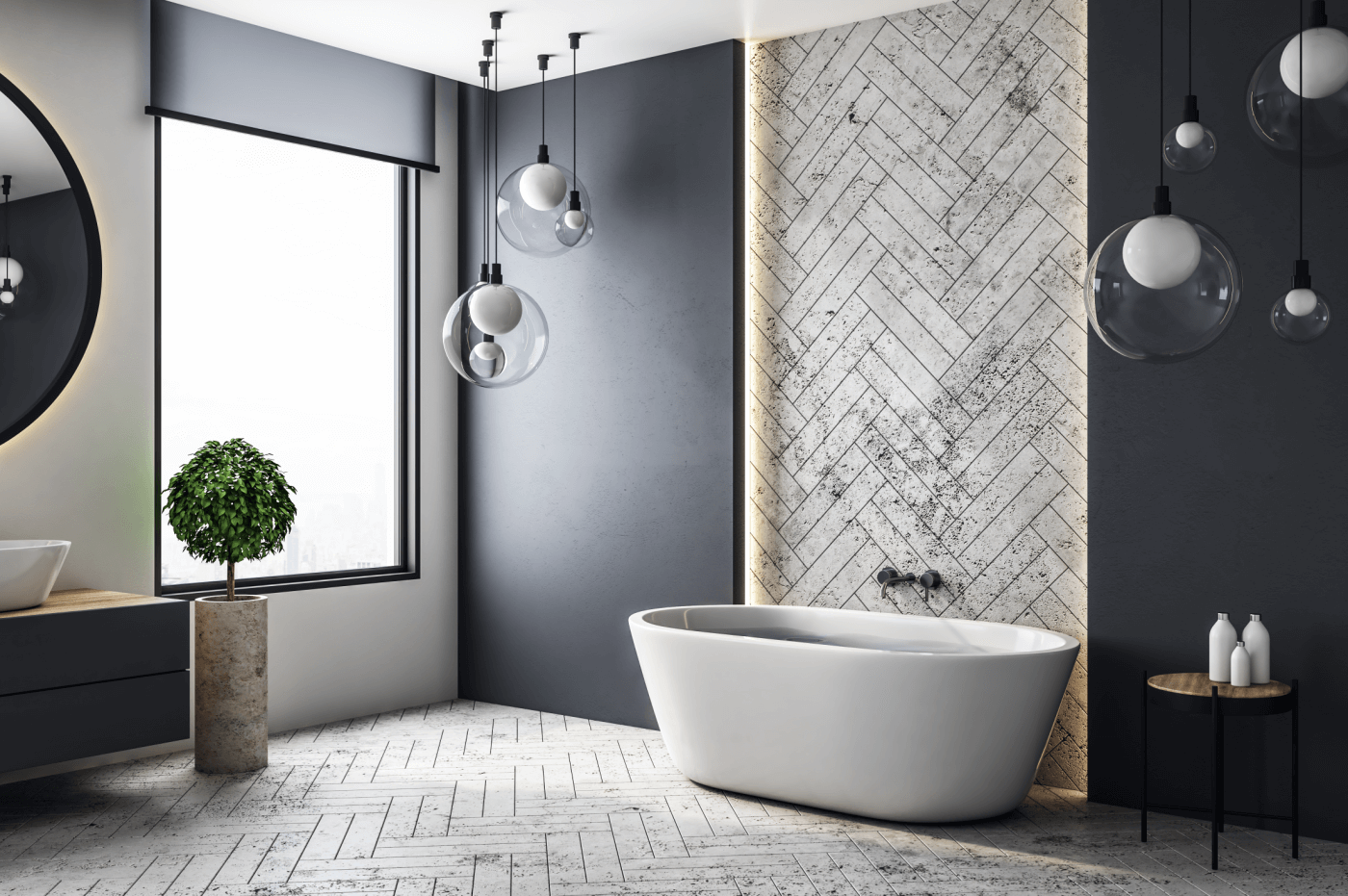Laminate flooring has become a go-to option for many homeowners due to its ease of installation, high durability, and cheaper cost compared to other flooring options such as luxury vinyl and hardwood.
Laminate is highly versatile and can be used in a wide variety of settings – living rooms, bedrooms, kitchens, and bathrooms are all suitable for this affordable flooring solution.
But it’s not all sunshine and rainbows. Like any other flooring option, laminate has its pros and cons. It’s quite susceptible to water damage and its lifespan is not as long as some other options.
Keeping all that in mind, let’s take a closer look at what laminate has to offer and its strong and weak points.
What exactly is Laminate and How is Laminate Flooring Made?
Laminate is a multi-layer synthetic flooring product that is designed to simulate the look of wood or stone.
This is achieved by fusing together 4 different layers in a process called lamination. When it comes to laminate flooring, this simply means layering materials together to create a stronger and more durable structure.
The four layers are:
Wear layer
This is the surface layer of laminate. It’s made of thin, flexible sheets of paper which are used to provide a coating and protect the surface from scratches, dents, and water damage.
Image Layer
Directly beneath lies the image layer, also known as the pattern layer. It’s essentially a high-resolution photographic image of the flooring material printed on paper or directly onto the substrate. It gives laminate the appearance of wood, stone, or any other material.
Core Layer
This is the bulk of the floor, usually made from high-density fiberboard (HDF). HDF is a type of engineered wood product that's made from wood fibers combined with resin and wax under heat and high pressure to create a dense, stable, and strong board made to sustain impact.
Its thickness ranges from 6 to 12 mm depending on the quality of laminate, and it serves to provide stability, durability, and forms the "body" of the laminate flooring.
Backing Layer
The backing layer is the lowest layer of laminate. It’s in charge of preserving the plank from moisture damage while providing dimensional stability.
Suitable rooms
The amazing thing about laminate is its versatility. It can mimic the appearance of various types of hardwood, stone, tile and even concrete floors, which makes the surface ideal for most rooms in your household.
It’s especially great for living rooms, because it can match the aesthetic and design choices of your space at a fraction of the cost of aforementioned flooring options.
Laminate also fits bedrooms well, but it can get noisy because it is typically denser than other flooring solutions such as hardwood, amplifying sounds like footsteps.
One thing you should keep in mind when selecting laminate for rooms such as bathrooms and kitchens is moisture damage – more on that in the next section of this article.
Durability and Waterproofing
Laminate is a highly durable flooring option due to its multi-layer design, where each layer serves a purpose of minimizing the impact of daily wear and tear.
The top (wear) layer is designed to protect the surface from scratches, dents and moisture damage, making this flooring option great for households with dogs and cats.
While the wear layer does offer protection against spills and surface moisture, it doesn’t make the flooring completely waterproof, making laminate a less than ideal option for bathrooms.
Waterproof laminate does exist, though. It has hydrophobic coating, a slightly different core, and tighter locking systems to ensure better moisture resistance throughout the entire plank.
As opposed to the top layer which mitigates minor damage to the surface, the core layer provides most of the stability and durability, allowing the floor to withstand heavy pressure, such as furniture.
Another key factor that should be considered if you have pets is the laminate’s AC (abrasion classification) rating. Higher residential AC rating (AC3 and above) means better scratch resistance.
Installation
Installation of laminate flooring is a relatively straight-forward procedure. If you’re an experienced DIY enthusiast, you should be able to install laminate by yourself with the right tools for the job.
This doesn’t mean that it’s an easy project to tackle, though. You should consider hiring a professional installer if you're not comfortable with tasks like measuring, cutting, and accurately aligning the planks.
The typical cost of professional installation is $2 to $5 per square foot.
Key Steps For Installation
The first thing you should do is prepare the subfloor. Make sure the subfloor is not only clean, dry, and level but also free from any debris or protruding nails that could affect the stability of the laminate planks.
Next, you need to lay down an underlayment. Underlayment serves as a moisture barrier, and it helps smooth out minor imperfections in the subfloor.
It also provides sound dampening, helping reduce the noise of walking on the surface. Some laminate flooring comes with pre-attached underlayment, which simplifies this step.
The final step is clicking the laminate planks together to ensure a snug fit. As you lay down each piece, remember to use spacers between the flooring and the walls.
This space is important because it gives the floor room to expand a little when it gets warmer and the air gets more humid, preventing the floor from buckling or lifting.
Maintenance Tips
These floors are incredibly easy to maintain, but just like any other flooring option, you need to do it on a regular basis in order to keep them spotless.
For daily cleaning, you should just sweep the floors and vacuum them if needed. A soft bristle broom will do the job just fine to remove dirt and dust.
Once a week, you should use a damp mop or a cloth moistened with warm water and a neutral detergent. One thing to keep in mind is to thoroughly wring the mop and not leave the water on the floor for a long time in order to prevent moisture damage. Avoid using a steam mop for the same reason.
When it comes to cleaning solutions, avoid ammonia-based cleaning products and bleach as they can wear down the floor’s top layer, exposing the inner layers to moisture and further damage.
Pros and Cons of Laminate Flooring
Pros:
- Affordability: It’s cheaper than hardwood, vinyl and tile flooring, with material costs ranging from $1 to $5 per square foot.
- Durability: Highly durable multi-layer structure makes laminate resistant to scuffs and routine wear.
- Easy to maintain: Daily vacuuming and broom cleaning along with weekly damp mop cleaning will keep your floors shiny and spotless.
- Straightforward Installation: Laminate flooring features a user-friendly locking system that enables quick and straightforward installation.
Cons:
- Design Limitations: Laminate can be great at mimicking other materials, but at the end of the day, it’s still just an imitation. Although advancements in technology have greatly improved laminate’s appearance over the years, it will never quite match the exact look of hardwood or stone.
- Can’t be refinished: Unlike wood, laminate cannot be sanded down and refinished due to its composition and thinness.
- Water Damage: The core layer can be damaged by moisture. Furthermore, spills should be cleaned promptly, and the floor should be protected from standing water and harsh cleaning methods to avoid damaging the top layer.
- Repair Challenges: Damage to the surface of a laminate plank may be temporarily fixable, but extensive damage often requires replacing the entire floor, as individual planks cannot be easily replaced.












